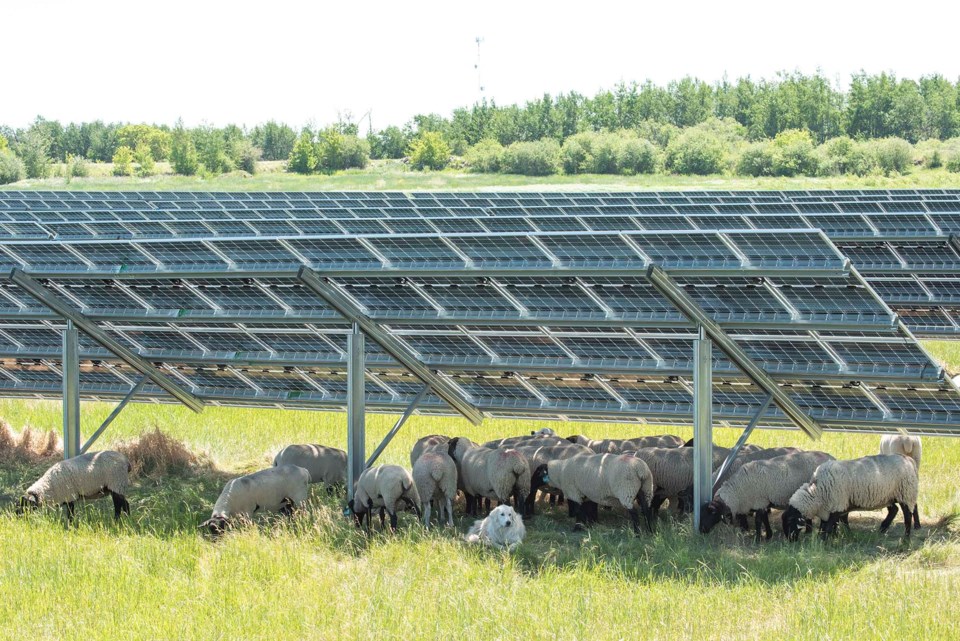A German power company has plans to build a $340-million solar farm in Sturgeon County — a farm which could be up and running in two years.
Alpin Sun announced April 27 that it had submitted to regulators an application to build a 1,200-acre, $340-million, 200-megawatt AC solar farm in Sturgeon County.
Alpin Sun is a German renewable energy company that is also building a 120-MW solar farm at the Edmonton International Airport.
The Sturgeon County farm, dubbed Sol Aurora, is billed as the biggest renewable energy project to date in central Alberta. The farm is slated to be built next to the AltaLink Heartland Substation in the northwest corner of Alberta’s Industrial Heartland region.
A media release from Alpin Sun said the Sol Aurora farm would involve some 480,000 bifacial solar panels posted on around 1,200 acres of heavy industrial land — an area equivalent to about 44 per cent of Morinville. The farm would produce enough energy to power 54,000 homes (more than twice the number of homes in St. Albert) and offset some 205,000 tonnes of carbon emissions a year (about 22 per cent of St. Albert’s community-based emissions in 2020). The farm is also approved to have a 100-MW battery energy storage system.
The project is meant to provide renewable power to hydrocarbon producers in Alberta’s Industrial Heartland, which covers much of eastern Sturgeon County.
Solar boom
Sturgeon County Mayor Alanna Hnatiw said this project will be the biggest solar farm in the county, once built. The farm would also create some 275 construction jobs and lower the county’s greenhouse-gas emissions.
“We’re happy to see real tangible steps forward in lowering emissions and attracting clean investment into the county,” Hnatiw said.
Solar project developer Gordon Howell, who runs the Utility Scale Solar PV in Alberta Facebook site, said the Sol Aurora project would be the biggest solar farm in Canada if it were operational today. (The current champ is the 13-MW farm in Willow Creek, Alta. The 465-MW farm in Vulcan County will become the biggest when it is fully online later this year.)
“There’s a huge solar rush happening,” Howell said, citing data from the Alberta Electric System Operator, with some 9,000 MW of solar worth $13 billion under development in Alberta as of March 2022.
Howell said the Sol Aurora farm is one of about 12 renewable energy projects in the works in Alberta with battery storage, which would let the farm store surplus power for sale when prices are high or the sun isn’t out.
Renewable power plants are catching on in the Heartland as companies seek to decarbonize their operations and products, said Mark Plamondon, executive director of Alberta’s Industrial Heartland Association. Shell recently built a 5-MW solar farm in the Heartland, for example, and is now working on a 58-MW one.
“You have a significant demand sink here,” Plamondon said, in the form of many big industrial customers who need green electricity.
Plamondon said the Heartland region also has plenty of sun, skilled labourers, and heavy industrial land, all of which are attractive to renewable power producers.
Hnatiw said solar farms such as this one could fit into this region’s growing hydrogen economy, as hydrogen is one way to store renewable power. This particular farm could also have sheep grazing under its panels, which supports the county’s goal to conserve farmland.
Alpin Sun officials could not be reached for comment as of press time. In the April 27 media release, the company said it plans to start construction of the farm in early 2023 and have it operational by mid 2024.



